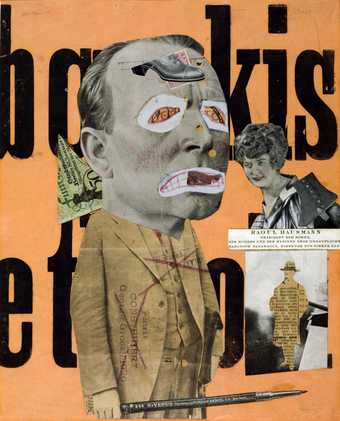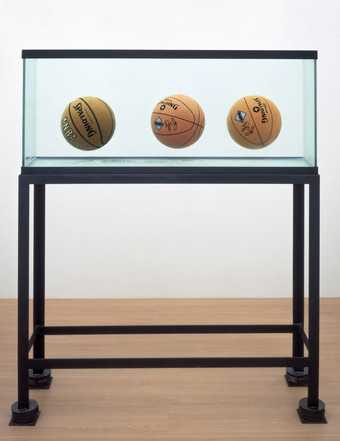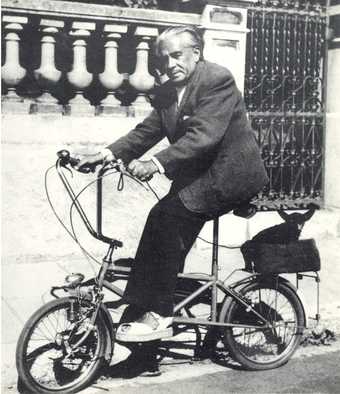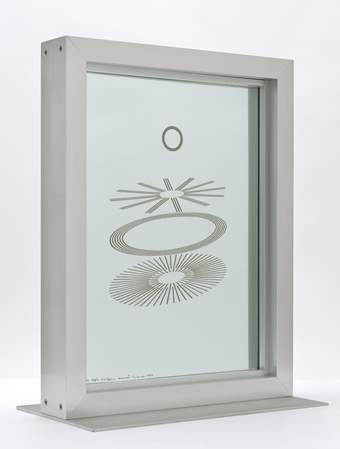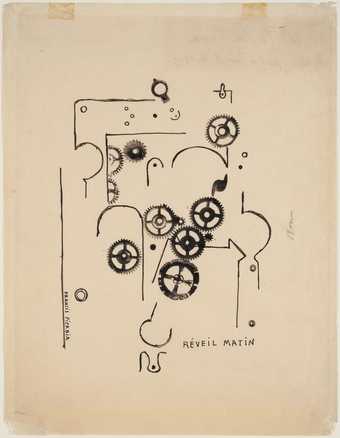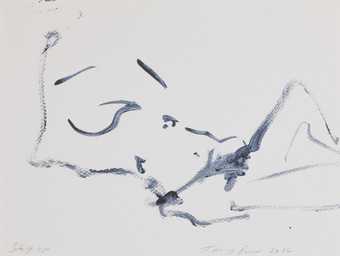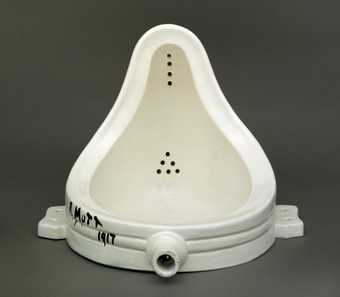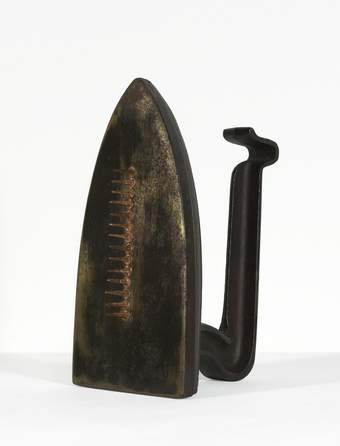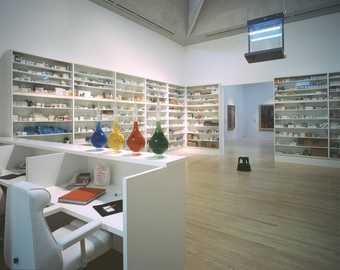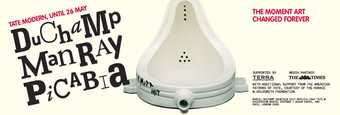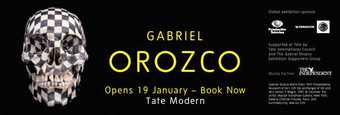Introduction
Duchamp’s earliest readymades included Bicycle Wheel of 1913, a wheel mounted on a wooden stool, and In Advance of the Broken Arm of 1915, a snow shovel inscribed with that title. In 1917 in New York, Duchamp made his most notorious readymade, Fountain, a men’s urinal signed by the artist with a false name and exhibited placed on its back. Later readymades were more elaborate and were referred to by Duchamp as assisted readymades.
For his readymades Duchamp deliberately chose ordinary, functional – and rather dull – objects. His choice was:
‘…based on a reaction of visual indifference, with at the same time a total absence of good or bad taste…’
Duchamp as quoted in The Art of Assemblage: A Symposium, The Museum of Modern Art, New York, October 19, 1961
Although the term readymade was invented by Duchamp to describe his own art, it has since been applied more generally to artworks made from manufactured objects. For example works by YBA artists Damien Hirst, Michael Landy and Tracey Emin, (such as Emin’s My Bed 1998) can be described as readymades. (See the glossary page for found object for more about artists who use found objects in their work).
In focus: Duchamp’s theory of the readymade
The theory behind the readymade was explained in an anonymous editorial published in the May 1917 issue of avant-garde magazine The Blind Man run by Duchamp and two friends:
Whether Mr Mutt with his own hands made the fountain or not has no importance. He CHOSE it. He took an ordinary article of life, and placed it so that its useful significance disappeared under the new title and point of view – created a new thought for that object.
There are three important points here: first, that the choice of object is itself a creative act. Secondly, that by cancelling the ‘useful’ function of an object it becomes art. Thirdly, that the presentation and addition of a title to the object have given it ‘a new thought’, a new meaning. Duchamp’s readymades also asserted the principle that what is art is defined by the artist. Choosing the object is itself a creative act, cancelling out the useful function of the object makes it art, and its presentation in the gallery gives it a new meaning. This move from artist-as-maker to artist-as-chooser is often seen as the beginning of the movement to conceptual art, as the status of the artist and the object are called into question. At the time, the readymade was seen as an assault on the conventional understanding not only of the status of art but its very nature.
A readymade term…!
Interestingly, the term chosen by Duchamp to describe his new approach to art making is in itself one that is ‘readymade’. By the end of the nineteenth century the term ‘ready-made’ was being used to describe objects that were manufactured as opposed to being handmade.


